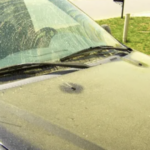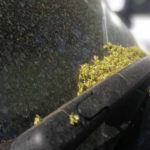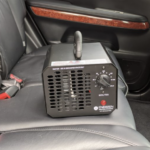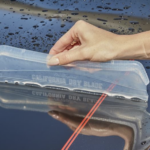How Coastal Road Salt Damages Your Car & How to Prevent Rust
Why Road Salt and Coastal Air Are a Threat to Your Vehicle
While Orlando itself doesn’t experience snowy winters, road salt exposure is still a major issue for vehicles in Florida. Drivers who visit coastal areas like Daytona Beach, Cocoa Beach, and Clearwater frequently expose their cars to salt-laden air and road spray, both of which accelerate rust formation.
Salt is highly corrosive, and when it mixes with moisture, it begins to break down metal surfaces. Florida’s high humidity and frequent rain create the perfect conditions for rust, particularly on the undercarriage, wheel wells, and suspension components.
Areas near coastal highways, marinas, and beachfront parking lots see even higher concentrations of salt in the air. Even if you don’t drive directly on the beach, your car may still pick up corrosive particles carried by coastal winds. Without proper maintenance, rust can spread quickly, weakening structural components and reducing the lifespan of your vehicle.
How Salt and Moisture Accelerate Rust Formation
Salt is a hygroscopic substance, meaning it attracts and retains moisture. When it settles on metal components, it creates a damp environment that speeds up oxidation. Unlike dirt and grime, which can be easily washed off, salt bonds with moisture to create a corrosive layer that eats through metal over time.
Key Factors That Increase Rust Risk:
- High humidity levels (Orlando averages 74% relative humidity year-round).
- Frequent rain and wet conditions, which activate salt’s corrosive properties.
- Heat exposure, which accelerates the chemical breakdown of metal.
- Poor drainage in undercarriages, allowing saltwater to pool in hard-to-reach areas.
Vehicles that travel near salt-treated roads, coastal highways, or beachfront parking lots face the highest risk of undercarriage corrosion. This is particularly concerning for residents of Titusville, Melbourne, and New Smyrna Beach, where ocean air contributes to increased salt exposure.
Signs of Rust Damage on Your Vehicle’s Undercarriage
Rust doesn’t appear overnight, but once it starts, it spreads quickly. Detecting it early can save you from costly repairs and structural damage.
Warning Signs That Rust is Developing:
- Discolored or flaky spots on the undercarriage, exhaust system, or wheel wells.
- Bubbling paint or orange-brown stains near metal surfaces.
- Creaking or squeaking sounds from suspension components.
- A weakening frame or holes in the undercarriage (advanced rust damage).
If you live in Sanford, St. Cloud, or Winter Garden, where many residents take frequent trips to the coast, checking for rust every few months can prevent long-term damage.
Best Ways to Prevent Rust from Salt Exposure
Salt damage is preventable with routine cleaning, protective coatings, and proper maintenance. Taking the right precautions helps extend the life of your vehicle and prevents rust from forming in the first place.
1. Rinse Your Car After Beach Trips or Coastal Driving
Washing off salt buildup immediately after exposure reduces the risk of rust. If you drive near the coast, rinsing your undercarriage with fresh water is essential.
- Use a high-pressure hose or undercarriage sprayer to reach tight spots.
- Focus on the wheel wells, suspension, and exhaust components, where salt accumulates the most.
- If using a self-service car wash, choose one with an undercarriage rinse option.
Drivers in Maitland, Apopka, and Clermont, where road trips to coastal areas are common, should make post-beach washing a routine habit.
2. Apply an Undercarriage Sealant or Rust Inhibitor
A rust-prevention spray creates a protective barrier that shields metal components from salt exposure. These coatings seal vulnerable areas, preventing moisture and corrosive materials from penetrating the surface.
Popular rust inhibitors include:
- Fluid Film – A lanolin-based rust protectant that repels moisture.
- Krown Rust Protection – A professional-grade rust inhibitor.
- Eastwood Rust Encapsulator – Seals and stops rust in its early stages.
For residents of Lake Mary, Windermere, and Baldwin Park, where many cars are parked outside, a rust-proofing treatment every 6-12 months helps maintain a corrosion-free undercarriage.
3. Avoid Parking Directly on Sand or Near Ocean Mist
Beach parking lots may seem convenient, but prolonged exposure to salty air and sand speeds up corrosion. Parking away from direct ocean mist reduces the risk of salt settling onto your vehicle.
If beach parking is unavoidable:
- Use a car cover to shield your vehicle from ocean spray.
- Rinse off sand and salt as soon as possible.
- Avoid driving through shallow saltwater puddles, which can splash onto your undercarriage.
Residents in Celebration, Kissimmee, and Hunters Creek, who frequently visit Cocoa Beach or New Smyrna Beach, should be particularly cautious about where they park.
4. Schedule Regular Professional Undercarriage Cleaning
Even with at-home rinsing, some salt particles remain trapped in hidden crevices. A professional undercarriage wash removes deep-seated contaminants that standard cleaning methods may miss.
Orlando Detailing professionals use high-pressure steam cleaning and rust-neutralizing solutions to eliminate corrosive buildup. Many Orlando-area mobile detailers offer specialized rust-prevention services, making it easier to keep vehicles protected without the hassle of visiting a shop.
For drivers in Altamonte Springs, Heathrow, and Avalon Park, where regular commuting exposes vehicles to road grime, semi-annual Orlando auto detailing helps prevent long-term rust issues.
How to Repair Rust If It Has Already Started
If rust has already formed, immediate treatment is necessary to prevent further spread. Rust that goes untreated can compromise the structural integrity of your vehicle, leading to costly repairs.
Rust Treatment Steps:
- Scrub off loose rust using a wire brush or sandpaper.
- Apply a rust converter (such as Rust-Oleum Rust Reformer) to neutralize oxidation.
- Seal the area with a rust-inhibiting primer or undercoating.
- Reapply a protective sealant to prevent further damage.
In cases of advanced rust, where metal has started to weaken, a professional body shop may be required for welding or part replacement.
Drivers in Dr. Phillips, Oviedo, and Winter Springs should inspect their undercarriage at least twice a year to catch rust in its early stages.
Final Thoughts: Protecting Your Vehicle from Coastal Salt Damage
Salt damage isn’t just a winter problem—it’s an ongoing threat for vehicles driven in coastal regions. Whether you live near the beach or take frequent trips to Florida’s coastline, preventing rust requires consistent maintenance and protective treatments.
By rinsing your undercarriage after exposure, applying rust-proofing coatings, and scheduling professional cleanings, you can keep your vehicle in top condition for years to come.
For those who want the best protection, mobile detailing services in Orlando offer specialized rust prevention treatments, making it easier than ever to safeguard your car.
Whether you’re commuting through Downtown Orlando, exploring the Gulf Coast, or heading to Daytona Beach for a weekend getaway, following these steps ensures that road salt won’t ruin your ride.
Leave a Comment Cancel Comment
Book Orlando Mobile Detailing
Search
Latest Post
-
 The Cost of Neglect: Why Regular Aircraft Detailing Saves Money in the Long Run
February 14, 2025
The Cost of Neglect: Why Regular Aircraft Detailing Saves Money in the Long Run
February 14, 2025
-
 Why Car Washes Aren’t Enough to Combat Pollen Damage
February 13, 2025
Why Car Washes Aren’t Enough to Combat Pollen Damage
February 13, 2025
-
 Orlando’s Pollen Problem: When Is It the Worst and How It Affects Your Car
February 13, 2025
Orlando’s Pollen Problem: When Is It the Worst and How It Affects Your Car
February 13, 2025
-
 How Ozone Generators Eliminate Stubborn Car Odors in Orlando
February 12, 2025
How Ozone Generators Eliminate Stubborn Car Odors in Orlando
February 12, 2025
-
 Why a Water Blade and Chamois Beat Towels Every Time!
February 9, 2025
Why a Water Blade and Chamois Beat Towels Every Time!
February 9, 2025
